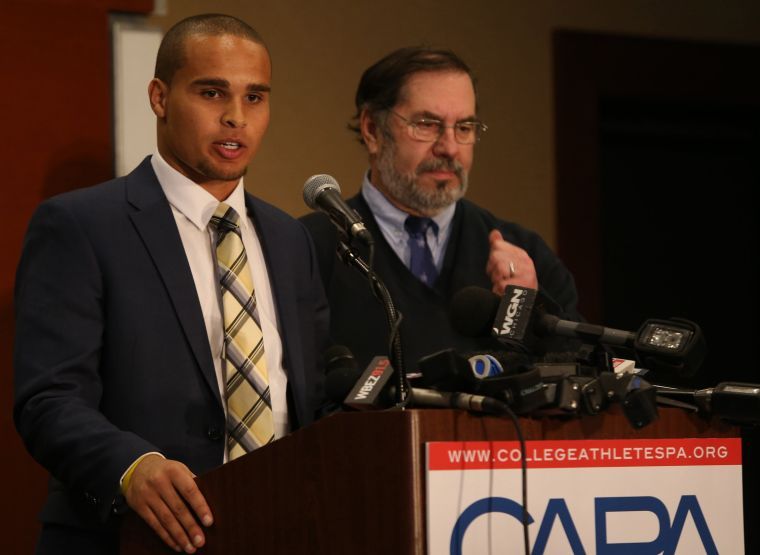Column: Questions still abound before student-athlete compensation is decided
April 7, 2014
The recent decision by the Chicago district of the National Labor Relations Board to allow the Northwestern University football team — in a movement led by former Northwestern Wildcat Kain Colter — to unionize thrust the already prevalent issue of paying college athletes even further up to the forefront of discussion.
The list of reasons for compensating college athletes is long and valid, as most of the logic boils down to universities generating immense amounts of revenue without having to pay the revenue generators — primarily the athletes — by hiding behind the veil of amateurism.
However, despite all of the reasons to pay college athletes, there are still plenty of questions that need to be answered, precedents that need to be set and fears that need to be calmed before implementing a system of student-athlete compensation.
There are still three big questions that I would like to see answered:
1. How will the pay be determined?
This is the most important question.
Will it be a standard rate for every athlete, or will different factors such as position affect the athlete’s pay? For instance, there is reason to question whether a walk-on basketball player would make as much as the starting center, if pay would be determined by performance at all.
But perhaps an even bigger issue would be whether different universities would have different rates of compensation. If so, this could potentially turn recruiting into a bidding war, or into a collegiate free agency. The balance of power would shift and greatly favor programs that would be willing to spend more.
The NCAA would have to ensure that this does not happen, and the best way to do so would be to issue a standard rate of pay while also allowing the athletes to profit off their likeness. This would allow elite players to benefit from their superior talent.
2. Who would be getting paid?
The payment debate is almost always centered on football and basketball, but what about the other athletes on campus?
One option would be to pay a standard rate for each sport based on proportional revenue. But to rehash the walk-on basketball player example, there would be plenty of gripes with the fact that a walk-on would be paid more than the ace of the baseball team or the top sprinter on the track and field team.
Then there is the looming issue of the impact on students who aren’t athletes but are involved with athletic departments.
Would members of an elite-level marching band such as Penn State’s Blue Band or the Ohio State marching band, who are fundamental parts of the sporting atmospheres for those schools, be compensated, as well? Essentially, student-athlete compensation will open up a Pandora’s box of other athletes and student groups requesting compensation.
3. Where will the money come from?
Clearly, the compensation should come from the stockpiles of revenue the universities make from collegiate athletics, but this process must be closely monitored.
It wouldn’t be out of the question for some programs to decide to cut other previously mentioned, less profitable athletic teams in order to further finance the leading-revenue sports. What’s more, it’s a legitimate fear that many programs wouldn’t be willing to give up any of the huge revenue boosts they receive from college sports and would try to find any other way to maintain that.
The NCAA or some other governing body would need to ensure that no other athletic or, more importantly, educational programs are cut due to fears of a diminished revenue stream from football or basketball.
If there is one thing I’m sure of, it’s that student-athlete compensation is coming. But the process of the compensation is still shrouded in mist, and this is far too important of an issue to rush in to.
The compensation will happen, but answers to these questions are needed beforehand.
Write to Dan at [email protected].



